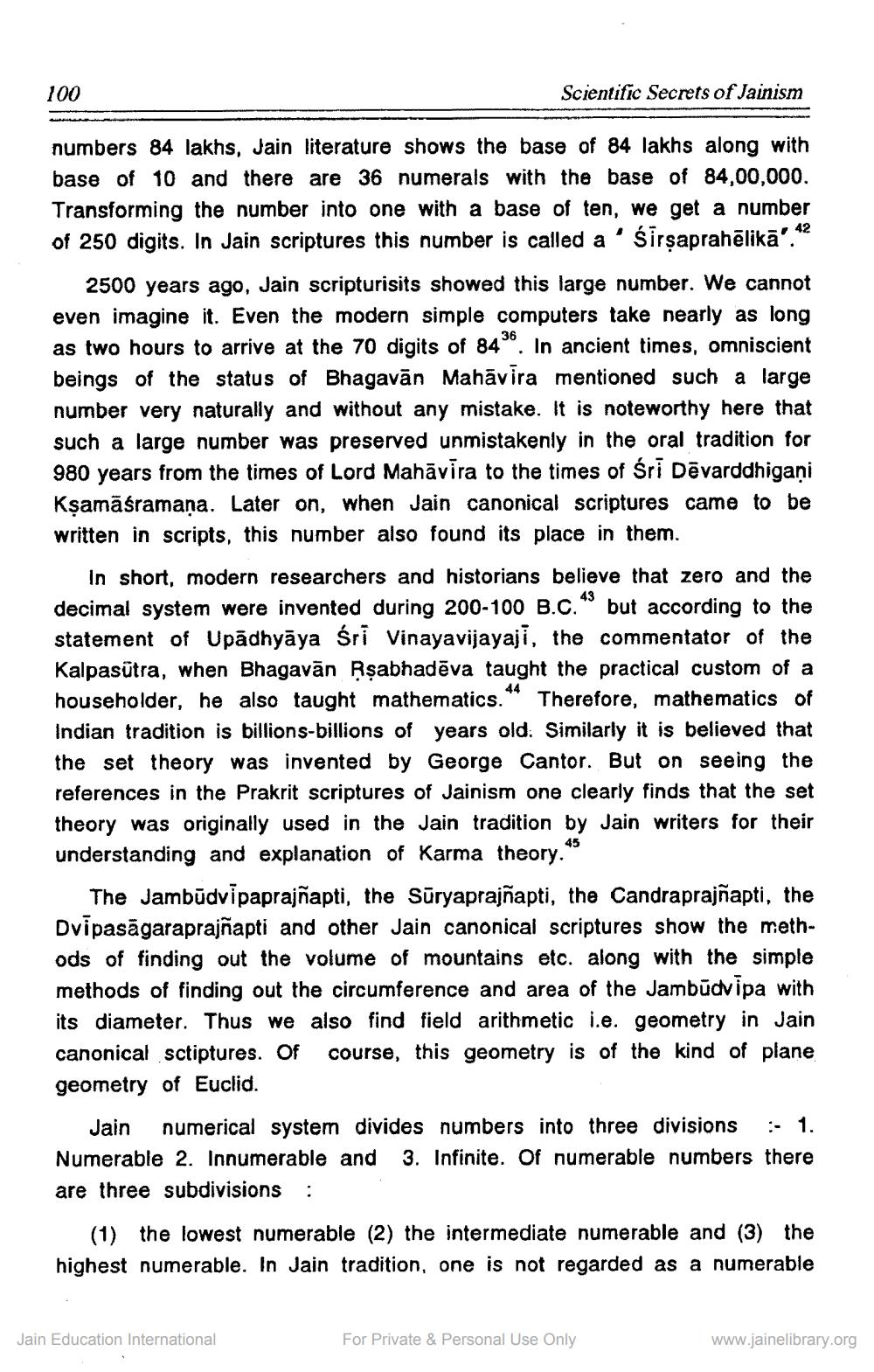________________
100
Scientific Secrets of Jainism
numbers 84 lakhs, Jain literature shows the base of 84 lakhs along with base of 10 and there are 36 numerals with the base of 84,00,000. Transforming the number into one with a base of ten, we get a number of 250 digits. In Jain scriptures this number is called a 'Sirṣaprahelikā”.42
2500 years ago, Jain scripturisits showed this large number. We cannot even imagine it. Even the modern simple computers take nearly as long as two hours to arrive at the 70 digits of 8436. In ancient times, omniscient beings of the status of Bhagavan Mahāvira mentioned such a large number very naturally and without any mistake. It is noteworthy here that such a large number was preserved unmistakenly in the oral tradition for 980 years from the times of Lord Mahāvīra to the times of Sri Devarddhigani Kṣamāśramaṇa. Later on, when Jain canonical scriptures came to be written in scripts, this number also found its place in them.
43
44
In short, modern researchers and historians believe that zero and the decimal system were invented during 200-100 B.C. but according to the statement of Upadhyāya Śri Vinayavijayaji, the commentator of the Kalpasütra, when Bhagavan Ṛṣabhadēva taught the practical custom of a householder, he also taught mathematics. Therefore, mathematics of Indian tradition is billions-billions of years old. Similarly it is believed that the set theory was invented by George Cantor. But on seeing the references in the Prakrit scriptures of Jainism one clearly finds that the set theory was originally used in the Jain tradition by Jain writers for their understanding and explanation of Karma theory."
45
The Jambudvipaprajñapti, the Suryaprajñapti, the Candraprajñapti, the Dvipasāgaraprajñapti and other Jain canonical scriptures show the methods of finding out the volume of mountains etc. along with the simple methods of finding out the circumference and area of the Jambudvipa with its diameter. Thus we also find field arithmetic i.e. geometry in Jain canonical sctiptures. Of course, this geometry is of the kind of plane geometry of Euclid.
Jain numerical system divides numbers into three divisions :- 1. Numerable 2. Innumerable and 3. Infinite. Of numerable numbers there are three subdivisions:
(1) the lowest numerable (2) the intermediate numerable and (3) the highest numerable. In Jain tradition, one is not regarded as a numerable
Jain Education International
For Private & Personal Use Only
www.jainelibrary.org




